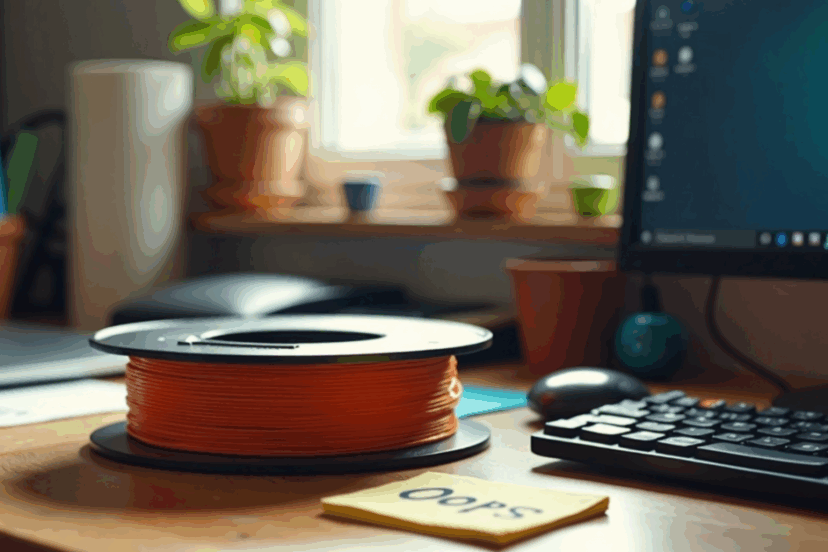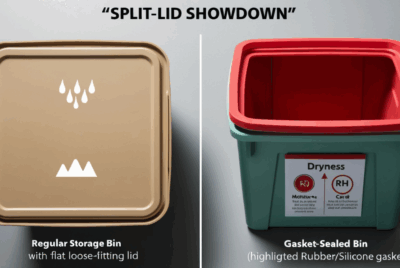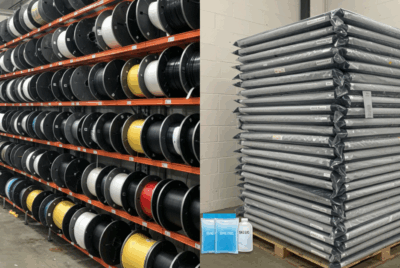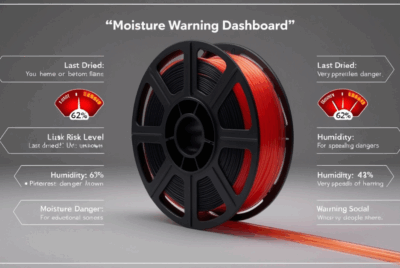How Long Can 3D Printer Filament Sit Out Before It Goes Bad?
1. We’ve All Left It Out… But How Bad Is It?
Let’s be real—sometimes you finish a print and forget to put the spool away. A few hours pass. A day. A week. And now you’re wondering: “Did I just ruin this $30 spool?”
Good news: Not always.
But to keep your filament happy and your prints crispy, you need to know how long it’s safe to let filament sit out before it needs a drying session.
2. Why Sitting Out Matters: Moisture is Always Watching
Filament is hygroscopic. That’s a fancy way of saying it loves to absorb moisture from the air. Even in air-conditioned rooms, the relative humidity (RH) can be enough to slowly ruin your spool.
Moisture doesn’t need days—it can start working its way in within hours.
3. What Happens to Filament That’s Exposed Too Long?
When filament absorbs moisture, bad things start to happen:
- Bubbling and popping in the hot end
- Inconsistent extrusion
- Brittle prints that break easily
- Surface roughness or stringing
If it sits out too long, your perfect filament turns into a sabotaged spaghetti stick.
4. Key Factors That Affect Filament Exposure Time
How fast filament absorbs moisture depends on:
- Filament type (some are more sensitive)
- Humidity level in the room
- Temperature
- Time left exposed
- Whether the spool was already opened
Even a few hours can matter for sensitive materials in humid regions.
5. Average Safe Timeframes by Filament Type
Here’s a general idea of how long each filament can sit out before it likely needs drying:
| Filament | Safe Out Time (Average Humidity) | At-Risk Humidity Conditions |
|---|---|---|
| PLA | 2–3 days | >60% RH – needs drying after 1 day |
| ABS | 2–5 days | >50% RH – drying after 2–3 days |
| PETG | 1–2 days | >50% RH – drying after 1 day |
| TPU | 12–24 hours | >45% RH – drying after 12 hrs |
| Nylon | 4–8 hours | >40% RH – drying after 4 hrs |
| PVA | 2–4 hours | >35% RH – drying immediately |
Note: These are rough estimates for indoor environments around 50% RH. If you’re in a humid place (like Florida), cut those times in half.
6. Signs It’s Time to Dry Your Filament
Even if it’s been out for just a day or two, you may notice:
- Stringy prints
- Filament snapping during feed
- Soft or sticky feel
- Pops or steam during extrusion
- Gaps or weak layer bonding
Better to dry it than waste a whole print.
7. What If You Left It Out Overnight?
If it’s PLA or ABS and your environment is fairly dry (below 40% RH), it’s probably fine.
But if it was Nylon, PETG, or TPU, even one night can mean trouble—especially if your windows were open or it was raining.
8. Can You Leave Filament on the Printer?
Yes, but with caution.
If you print often and your space is dry and climate-controlled, you can leave the spool on your printer for a few days.
Pro tip: Use a cover or dry box if the filament will sit idle more than a day or two.
9. What Happens If You Keep Printing With Moist Filament?
You’ll probably notice:
- Messy prints
- Under-extrusion
- Brittle parts
- Tons of stringing or blobs
- And eventually… nozzle clogs
Moist filament might still work, but your quality will suffer—and it’s not worth wasting time or material.
10. How to Test If Your Filament Needs Drying
Try these simple methods:
- Pop test: Manually extrude—do you hear a snap, crackle, or pop? That’s steam.
- Bend test: Does the filament snap too easily?
- Hygrometer check: If your container reads 50% RH+, it’s time to dry.
11. Can You Prevent Moisture While It’s Sitting Out?
Yes!
Try these tips:
- Use a dry box that feeds filament directly
- Keep silica gel near your printer
- Avoid windows, radiators, and humid zones
- Cover the spool with a bag if you can’t store it right away
12. Best Quick-Dry Methods for Light Moisture
If you caught the exposure early:
- Use a filament dryer (like the SUNLU S2) for 4–6 hours
- Set your oven to 50–60°C and dry for a few hours
- Place in an airtight bin with fresh silica gel for 24–48 hours
Just don’t skip the drying—moisture always shows in your prints.
13. Tools That Help You Track Exposure
These handy tools make it easy to stay ahead of moisture issues:
- Digital hygrometers inside bins
- Color-changing silica packs
- SUNLU Filament Dryer Box with built-in readouts
- Smart sensors for humidity tracking via Bluetooth
14. How to Create an “In Use” Storage System
Keep things flowing and protected:
- Use a dry box as a filament feeder
- Rotate spools based on last use
- Label spools with the “Opened” date
- Keep backups vacuum-sealed and labeled
This system keeps your daily-use filament ready and your backups fresh.
15. Final Thoughts: Don’t Panic, Just Be Proactive
Leaving your filament out doesn’t mean it’s ruined—it just means you’ve got a short window to act. Dry it if needed, store it better next time, and get back to creating.
Because even though filament can be fragile, it’s also surprisingly forgiving—if you show it a little care.
❓FAQs
- Can leaving filament out for just one print ruin it?
Usually not, unless it’s Nylon or PVA in a high-humidity area. - What’s the best way to store filament between prints?
Use a dry box, vacuum-sealed bags, or an airtight bin with silica gel. - Should I dry filament before every print?
Not always, but if it’s been sitting out for more than 24–48 hours, it’s smart. - How often should I refresh silica gel packs?
Check them monthly or if the color indicators show saturation. - Can I use filament straight from the packaging without drying?
Yes—if it’s factory-sealed and hasn’t been opened before.




